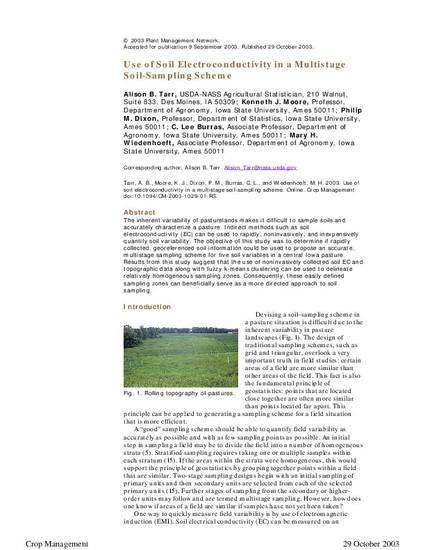
The inherent variability of pasturelands makes it difficult to sample soils and accurately characterize a pasture. Indirect methods such as soil electroconductivity (EC) can be used to rapidly, noninvasively, and inexpensively quantify soil variability. The objective of this study was to determine if rapidly collected, georeferenced soil information could be used to propose an accurate, multistage sampling scheme for five soil variables in a central Iowa pasture. Results from this study suggest that the use of noninvasively collected soil EC and topographic data along with fuzzy k-means clustering can be used to delineate relatively homogeneous sampling zones. Consequently, these easily defined sampling zones can beneficially serve as a more directed approach to soil sampling.
Available at: http://works.bepress.com/philip-dixon/31/

This article is from Crop Management (2003): doi:10.1094/CM-2003-1029-01-RS.